Search Results for dense forests
Explore AI generated designs, images, art and prompts by top community artists and designers.

A heroic fantasy character inspired by 'Ranger's Apprentice' , standing on a rocky hill in a dynamic pose , wearing a dark cloak and hood , bow slung on his shoulder , knives on the belt , blending into a misty background. Inside his silhouette , a double exposure effect shows medieval castles , dense forests , campfires , epic battles , and a mysterious figure in the shadows. Cinematic lighting , moody atmosphere , high detail , transparent or neutral background. --chaos 15 --ar 3:4 --v 7 --stylize 350 ,
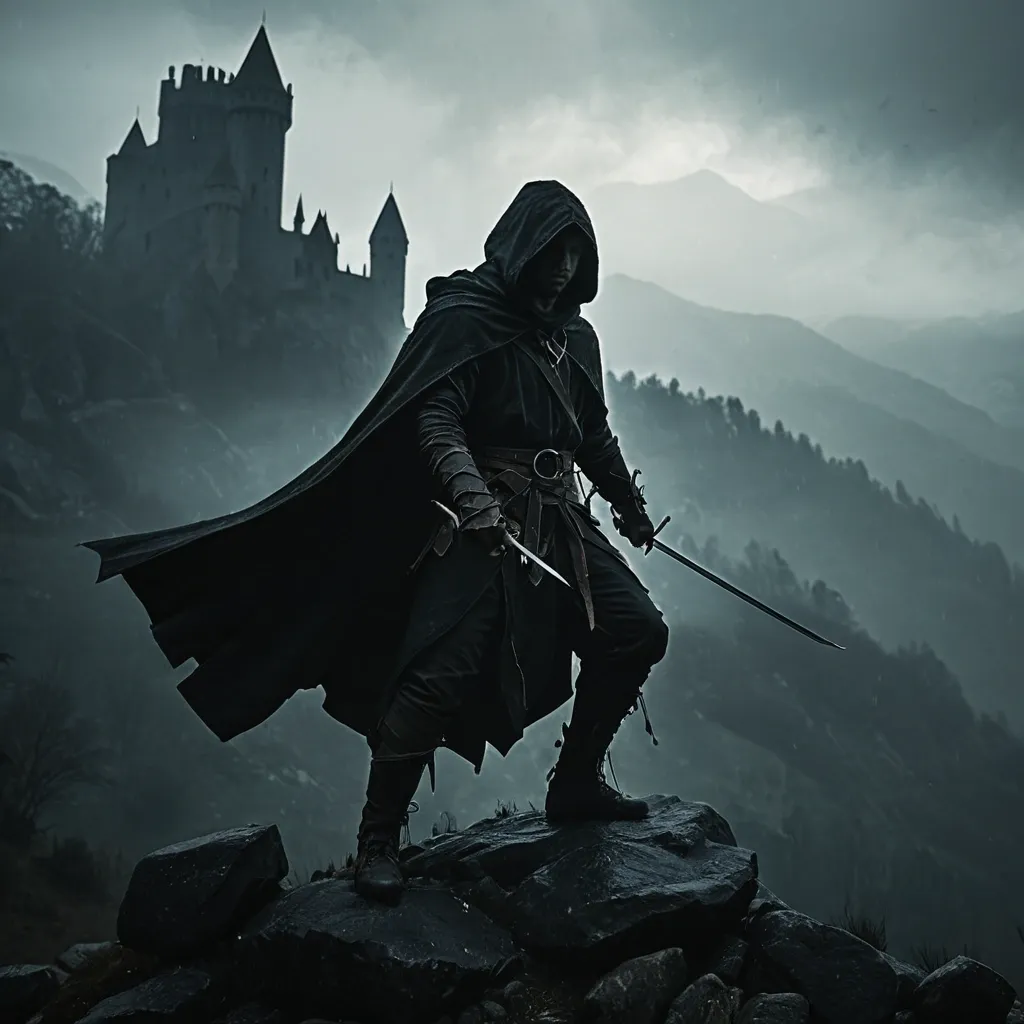
A heroic fantasy character inspired by 'Ranger's Apprentice' , standing on a rocky hill in a dynamic pose , wearing a dark cloak and hood , bow slung on his shoulder , knives on the belt , blending into a misty background. Inside his silhouette , a double exposure effect shows medieval castles , dense forests , campfires , epic battles , and a mysterious figure in the shadows. Cinematic lighting , moody atmosphere , high detail , transparent or neutral background. ,
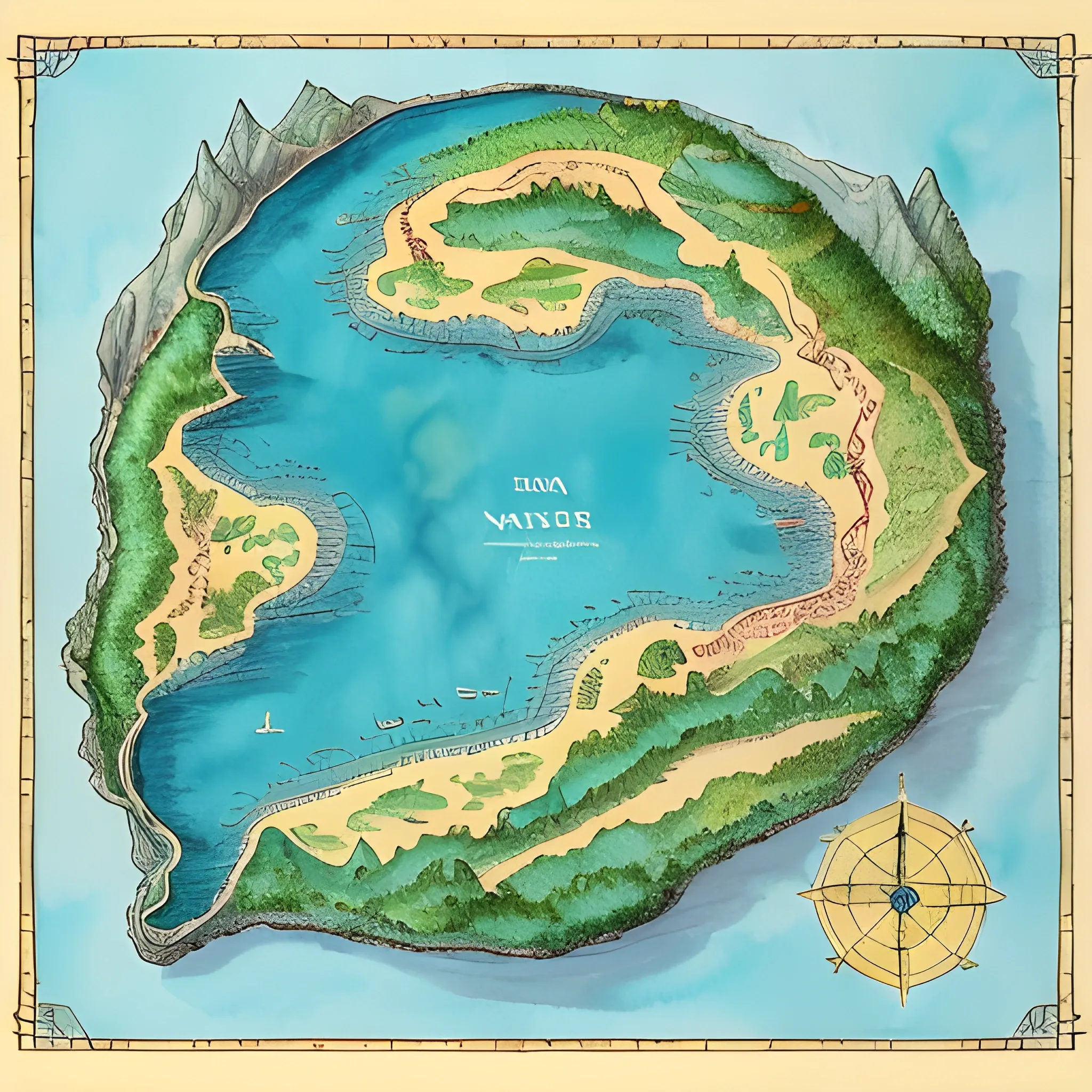
make a map , an intricately drawn map of the mysterious island. The cartographer's skill is evident , with detailed landscapes , winding trails , and enigmatic symbols hinting at hidden secrets. The map is rich in color , featuring vibrant blues for surrounding waters , lush greens for dense forests , and golden hues for sandy shores. Each landmark is marked with unique symbols , and dotted lines suggest unexplored territories , , Water Color ,
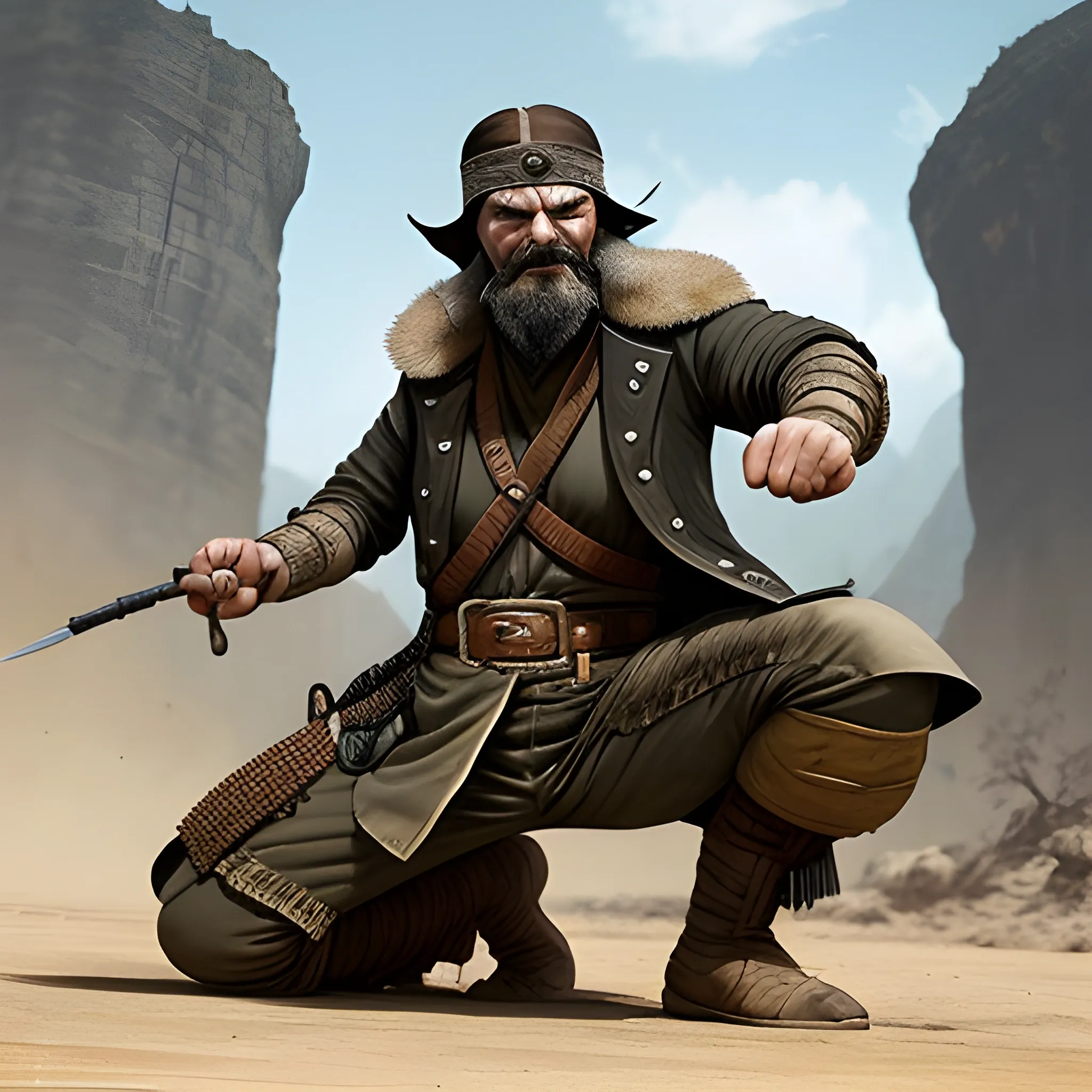
Appearance: The Bandit Leader is a commanding figure , exuding an air of authority and charisma that sets them apart from the ordinary members of their gang. They dress in more elaborate and well-maintained clothing , often adorned with stolen jewelry or symbols of power. Their attire may be a mix of practicality and ostentation , showing off their wealth and status while ensuring they can move freely in combat. The Bandit Leader may have a distinctive and fearsome appearance , with battle scars or an imposing physical presence that demands respect from their followers. Features: The Bandit Leader is not only a skilled fighter but also a cunning strategist. They possess tactical knowledge , able to plan and execute ambushes and raids with precision. The Bandit Leader is usually armed with high-quality weapons , whether a finely crafted sword or a specially customized bow. Their combat skills and combat prowess make them a formidable adversary in one-on-one combat , and they often lead from the front during raids. Habitat: The Bandit Leader's territory is typically a well-hidden and fortified stronghold , strategically chosen to offer both defense and escape routes. These hideouts may be deep in the wilderness , atop rocky cliffs , or concealed in dense forests. In your DND world , the Bandit Leader might operate from a secluded fortress , a smuggler's den , or even from within the heart of a city , using their influence to conceal their true identity. Behavior: The Bandit Leader is a cunning and ambitious individual , driven by a desire for wealth , power , and control. They are ruthless in their pursuit of dominance , often betraying or eliminating rivals to consolidate their position. The Bandit Leader can be charismatic and manipulative , skilled at inspiring loyalty among their followers through promises of riches and protection. However , they are also quick to punish those who fail them or show any signs of disloyalty. Role in the World: In your DND world , the Bandit Leader serves as the central antagonist to adventurers seeking to thwart criminal activity and restore law and order. They may be the head of a notorious bandit gang , a powerful crime lord with influence over multiple territories , or a charismatic rebel leader opposing a tyrannical regime. Encountering the Bandit Leader in your campaign can be a climactic and high-stakes event , representing the culmination of the adventurers' efforts to confront criminal activity and protect innocent lives. The Bandit Leader's defeat might serve as a major turning point in the campaign , leading to the dismantling of the gang or the exposure of a larger conspiracy. The presence of a Bandit Leader in your campaign world adds an element of intrigue and danger to the setting. Players will need to gather information , form alliances , and carefully plan their approach when confronting such a formidable foe. Engaging with the Bandit Leader and their gang can create thrilling and memorable encounters , providing players with opportunities for cunning negotiation , daring heists , and epic battles that will shape the course of your DND world's history ,
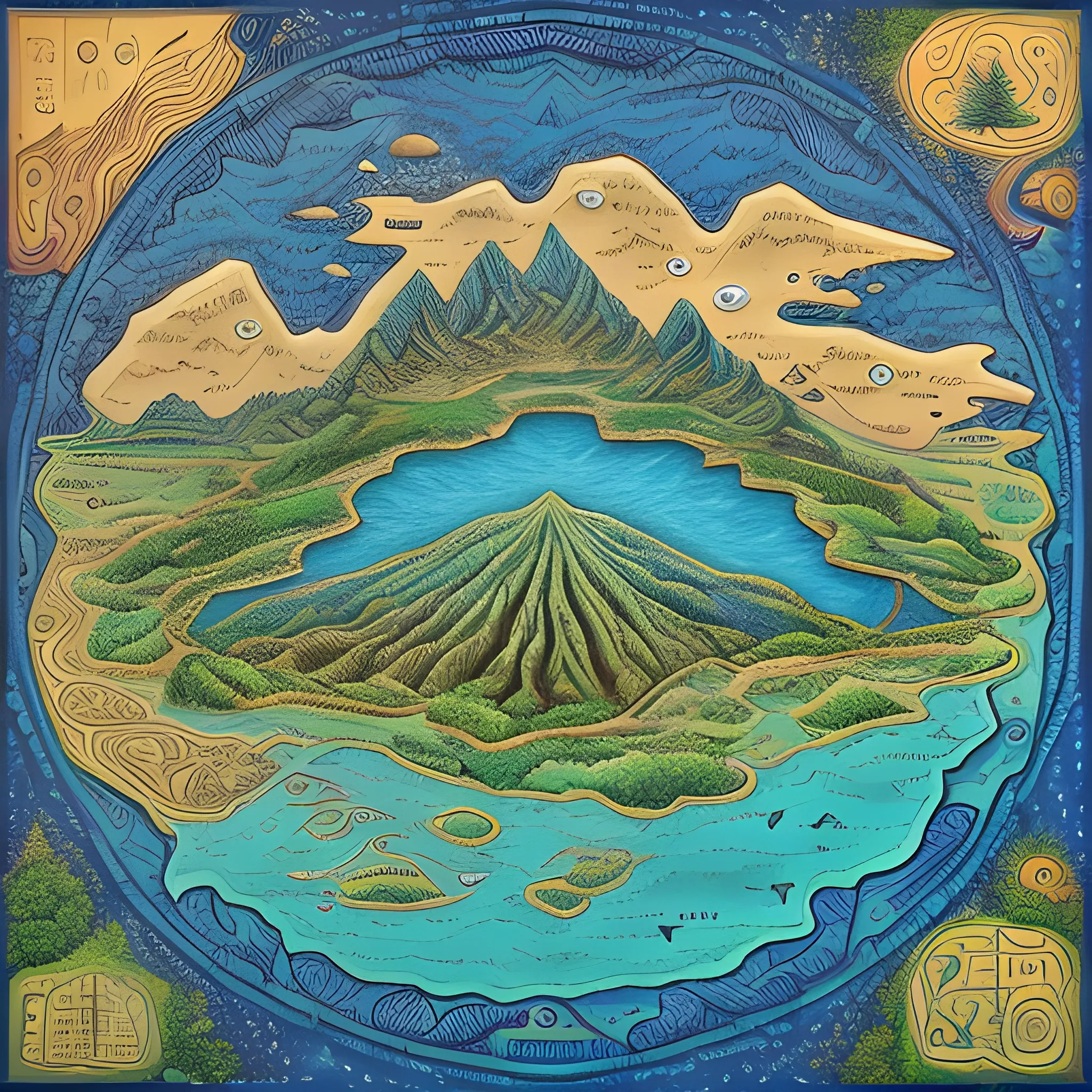
make a map , an intricately drawn map of the mysterious island. The cartographer's skill is evident , with detailed landscapes , winding trails , and enigmatic symbols hinting at hidden secrets. The map is rich in color , featuring vibrant blues for surrounding waters , lush greens for dense forests , and golden hues for sandy shores. Each landmark is marked with unique symbols , and dotted lines suggest unexplored territories , , Trippy , Oil Painting , 3D , psychedelic ,
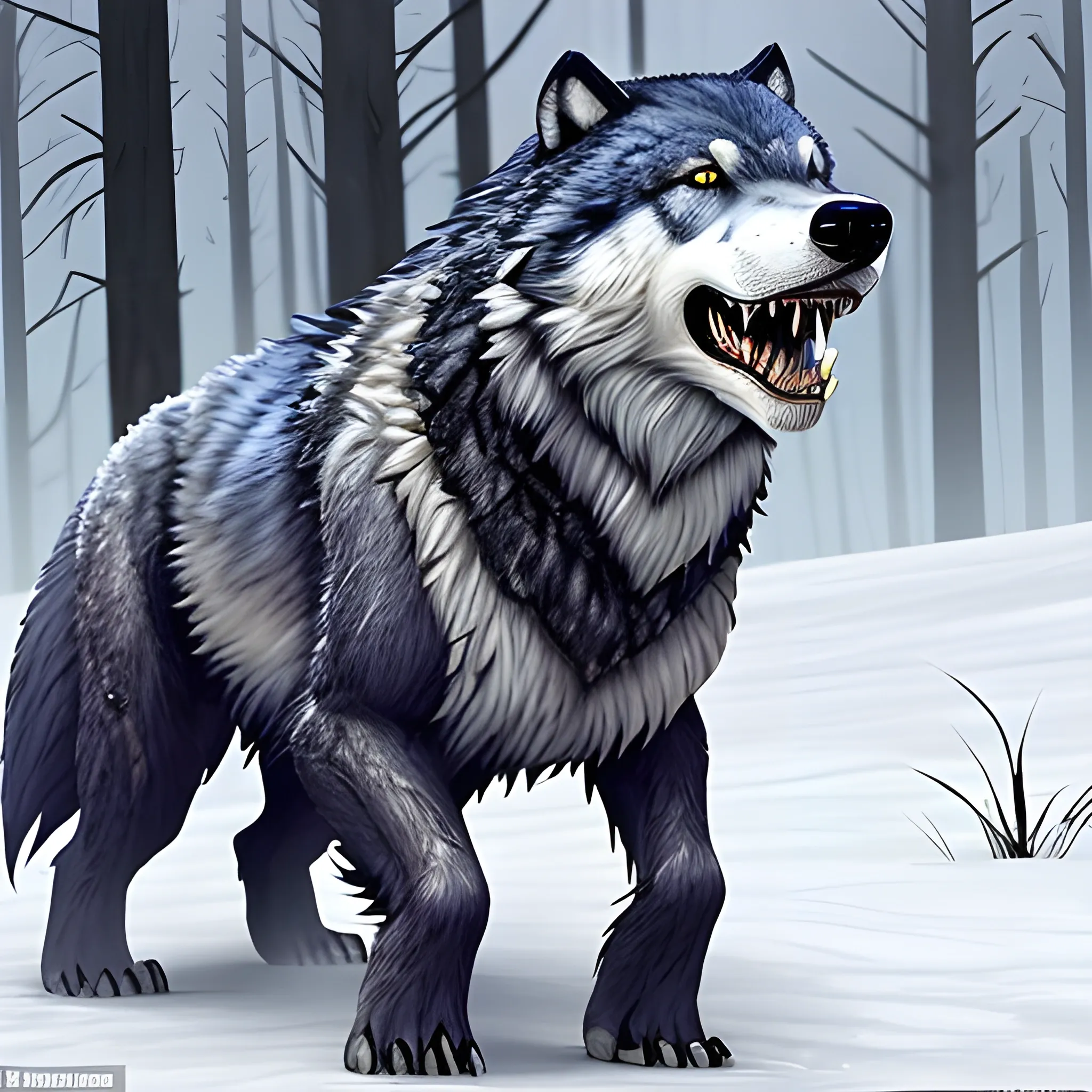
Appearance: The dire wolf is a massive and fearsome creature , closely related to the regular wolf but significantly larger and more imposing. It stands at around 4 to 5 feet tall at the shoulder and can weigh up to 800 pounds or more , dwarfing its smaller cousins. Its fur coat is thick and usually ranges in color from gray to black , providing excellent camouflage in various environments. The dire wolf's powerful jaws and sharp teeth make it a formidable predator in the wild. Features: The dire wolf shares many features with regular wolves but possesses even more enhanced physical capabilities. Its heightened strength , speed , and endurance make it a top-tier predator , capable of taking down large prey with ease. The dire wolf's large , muscular build and powerful limbs give it the advantage of overwhelming its opponents in combat. Habitat: Dire wolves tend to inhabit the wildest and most remote regions of your DND world , far away from civilization. They can be found in dense forests , icy tundras , and even rugged mountainous terrain. As apex predators , they rule over their territories and command respect from other creatures in their domain. Behavior: Like their smaller counterparts , dire wolves are social creatures that often form packs to hunt and survive. They exhibit strong loyalty to their packmates , and the alpha pair leads the group with a mix of intelligence and ferocity. Dire wolves are skilled hunters and work together to bring down formidable prey , such as large mammals and even other monstrous creatures. ,
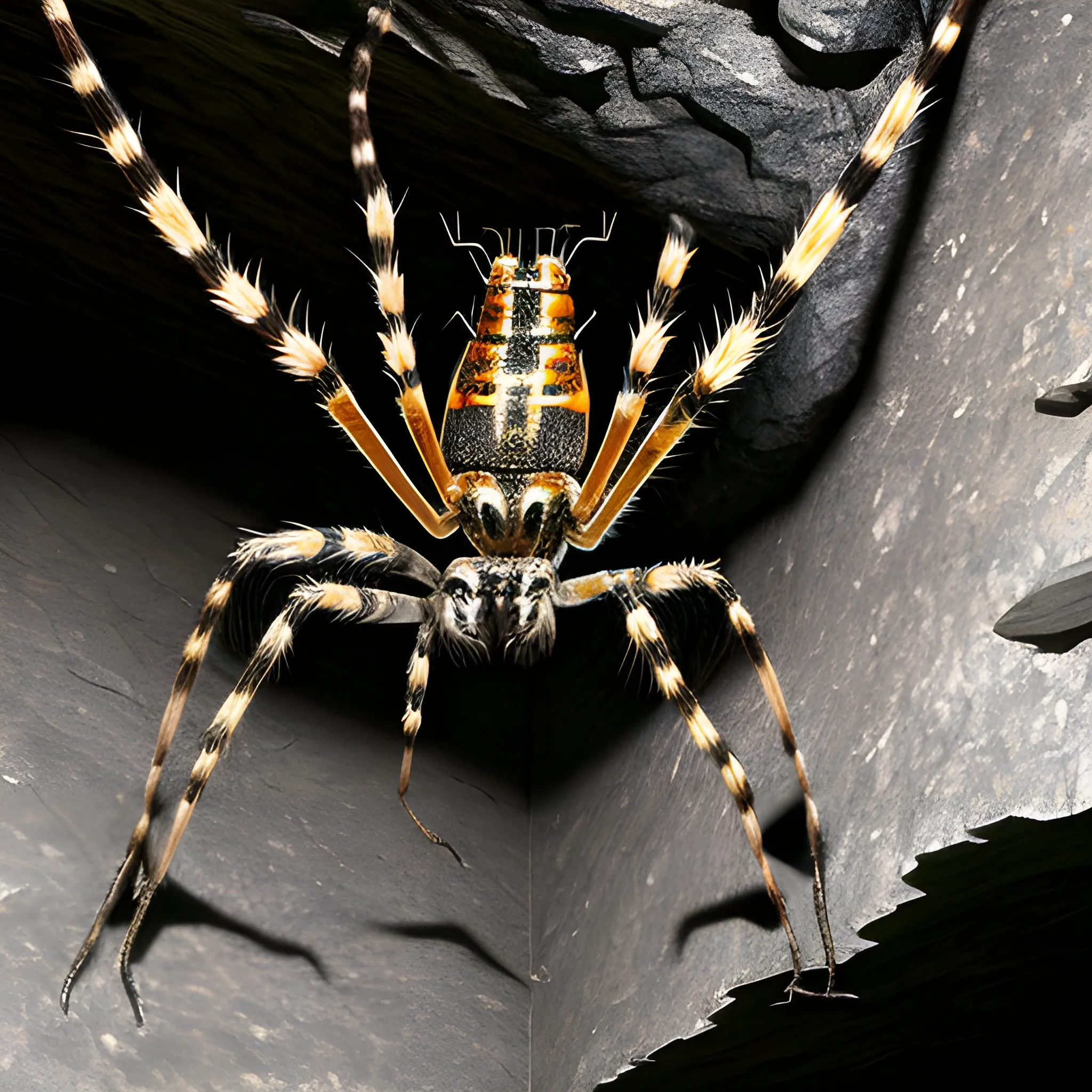
Appearance: The Giant Wolf Spider is an enormous arachnid , resembling a regular wolf spider but scaled up to a terrifying size. It has long , hairy legs , and its body can be up to 3 feet in length. The spider's exoskeleton is a mix of dark brown and black , camouflaging it in shadows and making it hard to spot in dimly lit environments. Its multiple eyes gleam with an eerie luminescence , providing it with excellent night vision. Features: Giant Wolf Spiders possess venomous fangs that they use to paralyze their prey. While their venom is not usually fatal to human-sized creatures , it can cause temporary paralysis and intense pain. They are incredibly agile and quick , making them adept ambush predators. Habitat: Giant Wolf Spiders are most commonly found in dark and damp environments , such as caves , forests , and subterranean tunnels. They are skilled at weaving complex webs that serve as both traps for their prey and a means to detect nearby movement. Behavior: These arachnids are solitary creatures and prefer to hunt alone. Despite their size , they are surprisingly stealthy and capable of stalking their prey unnoticed until they strike. They are skilled climbers and can scale walls and ceilings with ease. Role in the World: In your DND world , Giant Wolf Spiders might be common threats in certain regions , especially in dense forests or caves. They could be encountered as natural inhabitants of the wilderness or serve as guardians to ancient ruins and abandoned places. Their venomous bite and ability to ensnare their prey in webs make them formidable foes for adventurers. Encountering a Giant Wolf Spider in your campaign could lead to tense and suspenseful moments. The spiders might ambush adventurers , trying to paralyze them with their venom before delivering a deadly bite. Players might need to exercise caution and utilize strategies to counter the spider's agility and web traps effectively. Additionally , the presence of Giant Wolf Spiders can add an element of danger and fear to the wild and untamed areas of your world , making players wary of what lurks in the shadows and the darkness. ,
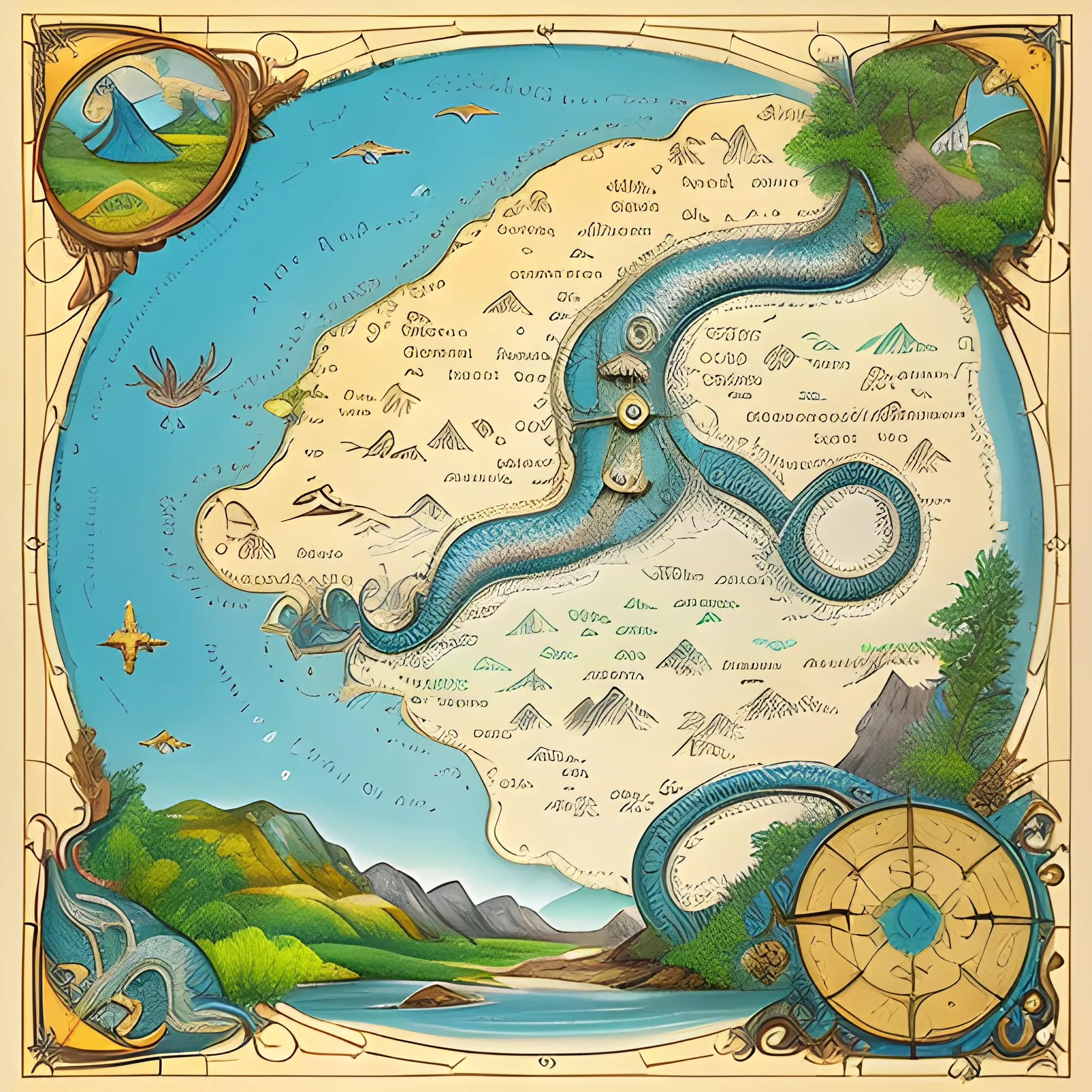
make a Mystical Isles Explorer's Notebook First Page:An ornate title page introduces the notebook's purpose: "Mystical Isles Explorer's Journal." The inked illustrations of sea serpents , mermaids , and soaring griffins spark curiosity and anticipation. Second page: make a map , an intricately drawn map of the mysterious island. The cartographer's skill is evident , with detailed landscapes , winding trails , and enigmatic symbols hinting at hidden secrets. The map is rich in color , featuring vibrant blues for surrounding waters , lush greens for dense forests , and golden hues for sandy shores. Each landmark is marked with unique symbols , and dotted lines suggest unexplored territories , Oil Painting , 3D ,

Appearance: The black bear is a large mammal with a sturdy build. Its fur is thick and mostly black , hence its name , although some individuals may have a light-brown muzzle or a small white patch on their chest. The fur is soft to the touch , providing excellent insulation during colder seasons. Adult black bears typically stand around 5 to 7 feet tall when on their hind legs and can weigh anywhere between 200 to 600 pounds , with males being larger than females. Features: The black bear has a distinctive humped back , which is a result of powerful muscles that enable them to dig and climb with ease. Their shoulders are well-developed , and their front paws have sharp claws , which they use for digging and climbing trees. Their strong jaws are equipped with sharp teeth , allowing them to consume various foods , including fruits , nuts , insects , and small animals. Despite their name , black bears can come in various shades of brown and cinnamon , but their fur generally appears dark from a distance. Habitat: Black bears are highly adaptable creatures and can be found in a range of habitats , including dense forests , mountainous regions , swamps , and even arid scrublands. They tend to favor areas with ample food sources , such as berries , nuts , and smaller mammals. In your DND world , they could inhabit ancient forests or remote wilderness areas , sometimes sharing territories with other woodland creatures. Behavior: Black bears are generally solitary animals , with the exception of mothers with their cubs. They are omnivorous , meaning they eat both plant matter and meat , but they are not typically aggressive unless provoked or threatened. They are skilled climbers , often seeking refuge in trees to avoid danger or to rest. During colder months , black bears may hibernate , using their stored fat reserves to survive the winter. Role in the World: In your DND world , black bears could play various roles , serving as guardians of certain areas , or sometimes appearing as natural obstacles for adventurers traveling through the wilderness. Druids and rangers might have a special connection with these majestic creatures , and they could be revered as symbols of strength , endurance , and adaptability. Encountering a black bear in the wild could offer opportunities for non-combat interactions , such as avoiding the creature by using stealth or calming it through the use of animal handling skills. However , if threatened or cornered , black bears could defend themselves fiercely , making them a potential challenge for adventurers who aren't careful in their approach. ,
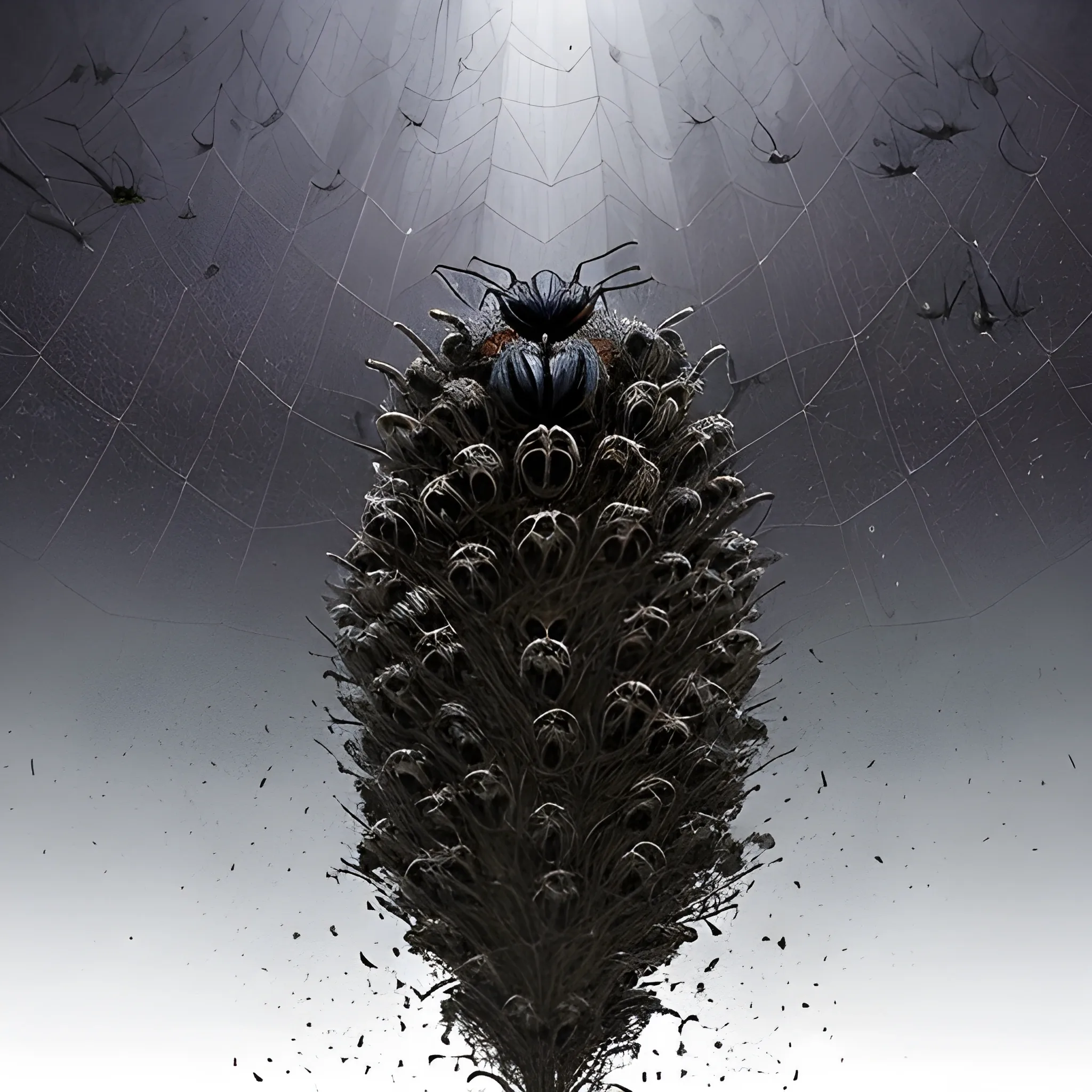
Appearance: A Swarm of Spiders is a horrifying and unsettling sight , as it consists of hundreds or even thousands of spiders working together as a single entity. The swarm appears as a writhing mass of crawling legs , forming a dark and undulating cloud of arachnids. The individual spiders in the swarm vary in size , but they are typically small , ranging from tiny spiders to larger ones with leg spans of a few inches. The swarm's color can range from a mix of dark browns and blacks to lighter hues , depending on the types of spiders comprising it. Features: The Swarm of Spiders moves with a coordinated fluidity , as if guided by an unseen intelligence. While each spider is relatively weak on its own , the collective strength of the swarm is overwhelming. The swarm is highly aggressive , attacking anything that comes within its vicinity. Its bite can deliver venom that , while not deadly , can cause pain , discomfort , and temporary paralysis. The swarm's sheer numbers can be its greatest advantage , allowing it to overwhelm and immobilize even larger creatures. Habitat: Swarms of Spiders are typically found in areas with a high concentration of spiders , such as dense forests , abandoned structures , or ancient ruins. They may inhabit dark and secluded places where their presence can go unnoticed until it's too late for unsuspecting intruders. Behavior: Swarms of Spiders are driven by instinct and the collective intelligence of the individual spiders that make up the swarm. They act as a cohesive unit , attacking en masse to subdue their prey and cocoon it in sticky webs. Swarms of Spiders can move quickly , scaling walls and surfaces with ease , which makes them challenging to escape from once they have engaged a target. Role in the World: In your DND world , Swarms of Spiders could be a terrifying threat lurking in the wild and dark corners of the land. They might be drawn to areas of powerful magic or necromantic influence , serving as guardians to forbidden places or the minions of evil spellcasters. The sight of a Swarm of Spiders can instill fear and panic in adventurers , as they face an unrelenting horde of venomous creatures. Encountering a Swarm of Spiders in your campaign can be a harrowing experience for adventurers. The swarm's ability to cover large areas and its relentless pursuit make it a deadly adversary. Players might need to think creatively to avoid or disperse the swarm , using spells , fire , or other area-of-effect attacks to fend off the spider horde. Additionally , the presence of Swarms of Spiders can create a sense of dread and trepidation , heightening the tension in areas where they are known to dwell , making players ever watchful for the signs of these arachnid hordes. ,

Appearance: The Bandit Leader is a commanding figure , exuding an air of authority and charisma that sets them apart from the ordinary members of their gang. They dress in more elaborate and well-maintained clothing , often adorned with stolen jewelry or symbols of power. Their attire may be a mix of practicality and ostentation , showing off their wealth and status while ensuring they can move freely in combat. The Bandit Leader may have a distinctive and fearsome appearance , with battle scars or an imposing physical presence that demands respect from their followers. Features: The Bandit Leader is not only a skilled fighter but also a cunning strategist. They possess tactical knowledge , able to plan and execute ambushes and raids with precision. The Bandit Leader is usually armed with high-quality weapons , whether a finely crafted sword or a specially customized bow. Their combat skills and combat prowess make them a formidable adversary in one-on-one combat , and they often lead from the front during raids. Habitat: The Bandit Leader's territory is typically a well-hidden and fortified stronghold , strategically chosen to offer both defense and escape routes. These hideouts may be deep in the wilderness , atop rocky cliffs , or concealed in dense forests. In your DND world , the Bandit Leader might operate from a secluded fortress , a smuggler's den , or even from within the heart of a city , using their influence to conceal their true identity. Behavior: The Bandit Leader is a cunning and ambitious individual , driven by a desire for wealth , power , and control. They are ruthless in their pursuit of dominance , often betraying or eliminating rivals to consolidate their position. The Bandit Leader can be charismatic and manipulative , skilled at inspiring loyalty among their followers through promises of riches and protection. However , they are also quick to punish those who fail them or show any signs of disloyalty. Role in the World: In your DND world , the Bandit Leader serves as the central antagonist to adventurers seeking to thwart criminal activity and restore law and order. They may be the head of a notorious bandit gang , a powerful crime lord with influence over multiple territories , or a charismatic rebel leader opposing a tyrannical regime. Encountering the Bandit Leader in your campaign can be a climactic and high-stakes event , representing the culmination of the adventurers' efforts to confront criminal activity and protect innocent lives. The Bandit Leader's defeat might serve as a major turning point in the campaign , leading to the dismantling of the gang or the exposure of a larger conspiracy. The presence of a Bandit Leader in your campaign world adds an element of intrigue and danger to the setting. Players will need to gather information , form alliances , and carefully plan their approach when confronting such a formidable foe. Engaging with the Bandit Leader and their gang can create thrilling and memorable encounters , providing players with opportunities for cunning negotiation , daring heists , and epic battles that will shape the course of your DND world's history ,

make a map , an intricately drawn map of the mysterious island. The cartographer's skill is evident , with detailed landscapes , winding trails , and enigmatic symbols hinting at hidden secrets. The map is rich in color , featuring vibrant blues for surrounding waters , lush greens for dense forests , and golden hues for sandy shores. Each landmark is marked with unique symbols , and dotted lines suggest unexplored territories , , Water Color , Trippy ,

make a map , an intricately drawn map of the mysterious island. The cartographer's skill is evident , with detailed landscapes , winding trails , and enigmatic symbols hinting at hidden secrets. The map is rich in color , featuring vibrant blues for surrounding waters , lush greens for dense forests , and golden hues for sandy shores. Each landmark is marked with unique symbols , and dotted lines suggest unexplored territories , , Trippy , Oil Painting , 3D ,
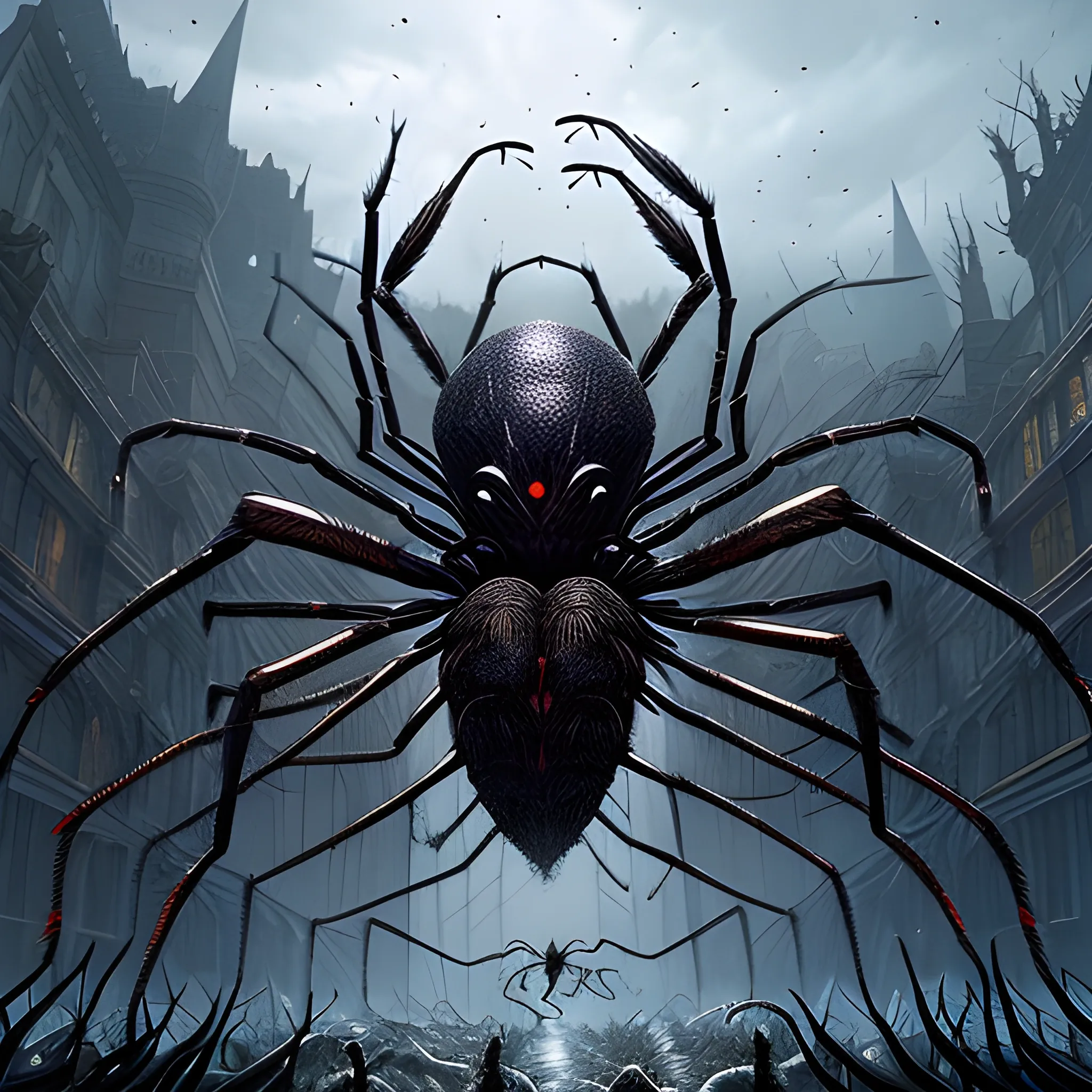
Appearance: A Swarm of Spiders is a horrifying and unsettling sight , as it consists of hundreds or even thousands of spiders working together as a single entity. The swarm appears as a writhing mass of crawling legs , forming a dark and undulating cloud of arachnids. The individual spiders in the swarm vary in size , but they are typically small , ranging from tiny spiders to larger ones with leg spans of a few inches. The swarm's color can range from a mix of dark browns and blacks to lighter hues , depending on the types of spiders comprising it. Features: The Swarm of Spiders moves with a coordinated fluidity , as if guided by an unseen intelligence. While each spider is relatively weak on its own , the collective strength of the swarm is overwhelming. The swarm is highly aggressive , attacking anything that comes within its vicinity. Its bite can deliver venom that , while not deadly , can cause pain , discomfort , and temporary paralysis. The swarm's sheer numbers can be its greatest advantage , allowing it to overwhelm and immobilize even larger creatures. Habitat: Swarms of Spiders are typically found in areas with a high concentration of spiders , such as dense forests , abandoned structures , or ancient ruins. They may inhabit dark and secluded places where their presence can go unnoticed until it's too late for unsuspecting intruders. Behavior: Swarms of Spiders are driven by instinct and the collective intelligence of the individual spiders that make up the swarm. They act as a cohesive unit , attacking en masse to subdue their prey and cocoon it in sticky webs. Swarms of Spiders can move quickly , scaling walls and surfaces with ease , which makes them challenging to escape from once they have engaged a target. Role in the World: In your DND world , Swarms of Spiders could be a terrifying threat lurking in the wild and dark corners of the land. They might be drawn to areas of powerful magic or necromantic influence , serving as guardians to forbidden places or the minions of evil spellcasters. The sight of a Swarm of Spiders can instill fear and panic in adventurers , as they face an unrelenting horde of venomous creatures. Encountering a Swarm of Spiders in your campaign can be a harrowing experience for adventurers. The swarm's ability to cover large areas and its relentless pursuit make it a deadly adversary. Players might need to think creatively to avoid or disperse the swarm , using spells , fire , or other area-of-effect attacks to fend off the spider horde. Additionally , the presence of Swarms of Spiders can create a sense of dread and trepidation , heightening the tension in areas where they are known to dwell , making players ever watchful for the signs of these arachnid hordes. ,
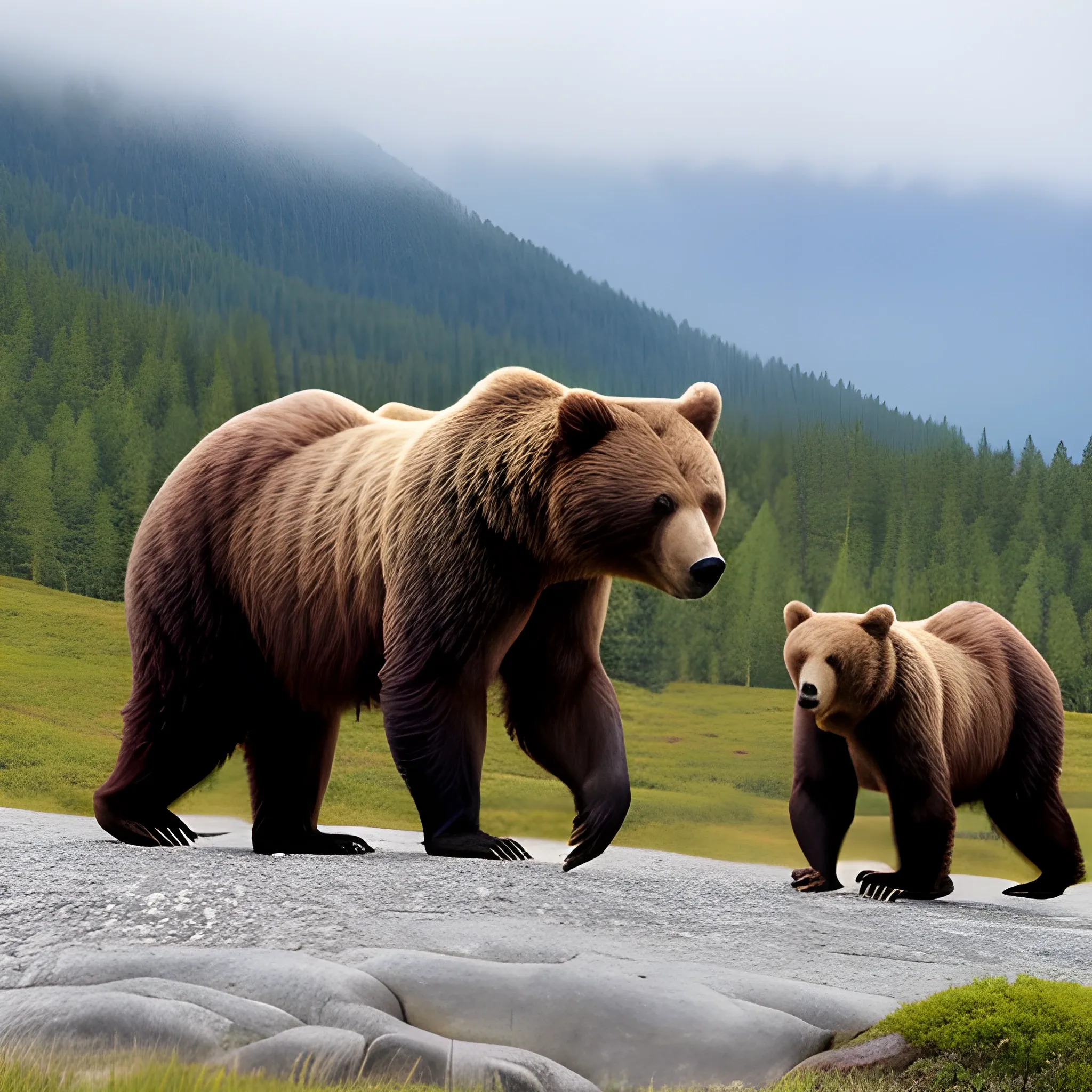
Appearance: The brown bear is a large and powerful creature , often considered the embodiment of strength and ferocity. It has a distinctive hump of muscle on its shoulders , which sets it apart from other bear species. Despite its name , the brown bear's fur can vary significantly in color , ranging from light brown to dark brown , and even shades of blonde or reddish-brown. Some individuals may have a lighter-colored face , creating a "grizzled" appearance , while others have a more uniform coloration throughout their body. Features: Brown bears are well-adapted for survival in various environments. They have strong limbs with sharp claws , which they use for digging , climbing , and catching prey. Their jaws are equipped with formidable teeth that can crush bones and tear through flesh. Adult brown bears can stand around 6 to 10 feet tall when on their hind legs , and their weight ranges from 400 to 1 , 500 pounds , with males being significantly larger than females. Habitat: Brown bears are versatile creatures , capable of inhabiting a wide range of habitats. They can be found in dense forests , grasslands , tundra , and mountainous regions. In your DND world , they might be common inhabitants of rugged wilderness areas , guarding their territories and foraging for food. Behavior: Brown bears are generally solitary animals , except during the breeding season or when a mother is caring for her cubs. They are omnivorous , having a diverse diet that includes berries , fruits , fish , insects , small mammals , and even carrion. Their intelligence and resourcefulness enable them to adapt to different food sources based on the season and availability. Role in the World: In your DND world , brown bears could play a significant role in the ecosystem. They might be seen as the apex predators of certain regions , balancing the population of prey animals and ensuring the health of the natural environment. Druids and rangers could have a special connection with brown bears , viewing them as symbols of the wild and protectors of nature. Encountering a brown bear in the wilderness could be a thrilling and potentially dangerous experience for adventurers. These formidable creatures are generally not aggressive toward humans , but they may become defensive if they feel threatened or if their territory is encroached upon. Adventurers might have opportunities to peacefully observe brown bears from a distance or use animal handling skills to avoid conflict. However , provoking or attacking a brown bear could lead to a fierce and challenging battle , as they are capable of inflicting significant damage with their powerful claws and jaws. ,
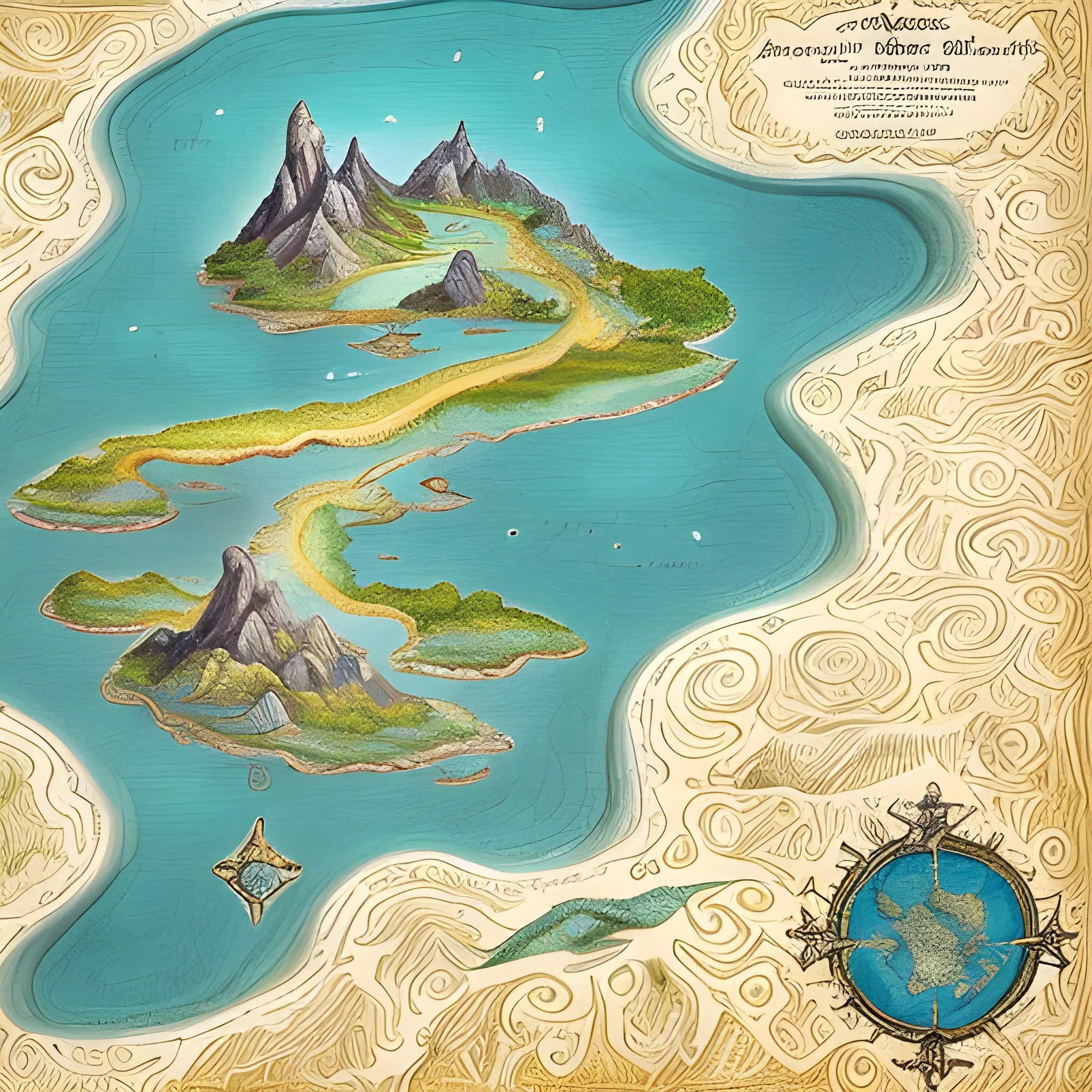
make an open Notebook of Mystical Isles Explorer's First Page: An ornate title page introduces the notebook's purpose: "Mystical Isles Explorer's Journal." The inked illustrations of sea serpents , mermaids , and soaring griffins spark curiosity and anticipation. Second page: make a map , an intricately drawn map of the mysterious island. The cartographer's skill is evident , with detailed landscapes , winding trails , and enigmatic symbols hinting at hidden secrets. The map is rich in color , featuring vibrant blues for surrounding waters , lush greens for dense forests , and golden hues for sandy shores. Each landmark is marked with unique symbols , and dotted lines suggest unexplored territories , Oil Painting , 3D , Handmade ,